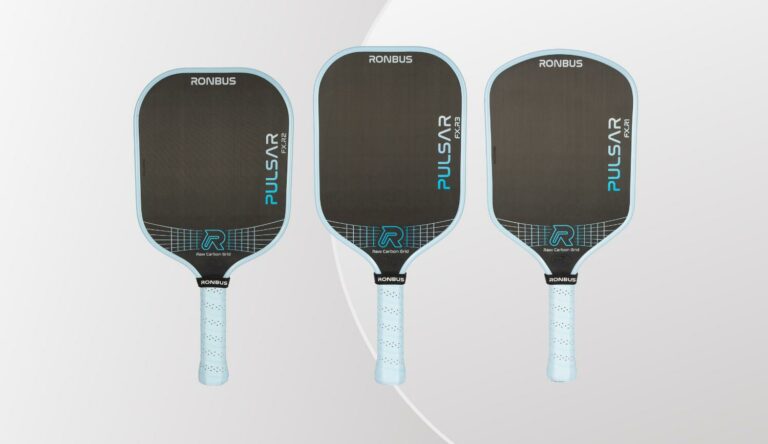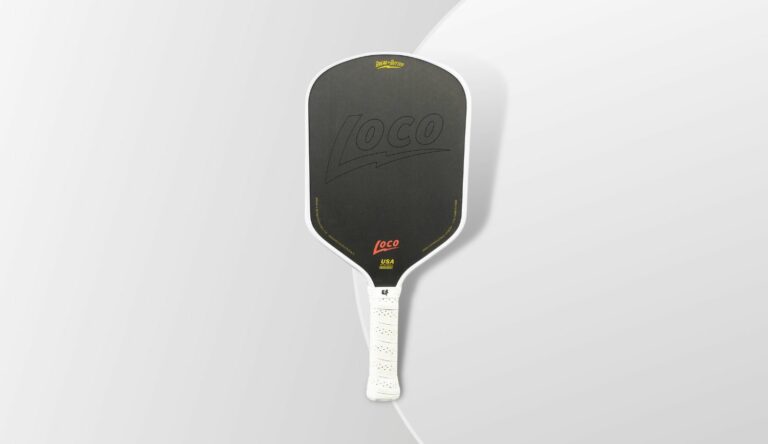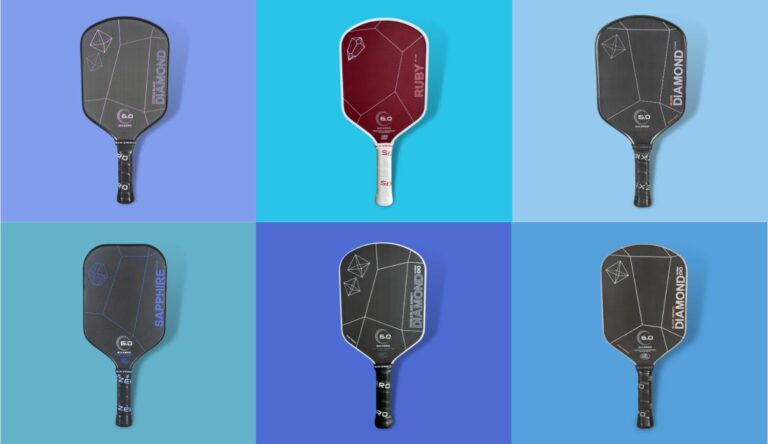Thermoformed paddles have become all the rage in 2023. Unfortunately, durability issues have plagued their rise in popularity.
While delamination has been the most publicized durability issue, Gen. 2 thermoformed paddles have faced other durability issues, such as core corruption and disbonding.
In this post, we’re going to break down what delamination is so you can understand the phenomenon and identify when a paddle has become delaminated. We’ll also briefly cover other thermoforming durability issues.
Let’s dive in.
Contents
What is delamination?
Paddle delamination occurs when the carbon fiber/fiberglass face of the paddle separates from the paddle’s honeycomb core material. The face and core are glued together, so for delamination to happen, the glue has to fail.
Delamination isn’t a new issue. It’s a manufacturing obstacle that’s plagued the pickleball paddle industry for years. While a wide variety of pickleball paddles can delaminate, the early-generation thermoformed paddles from late 2022/early 2023 have been the most prone to this type of failure.
The issue of delamination mainly caught fire due to how delaminated thermoformed paddles perform on the court. They become unpredictable, and often, super powerful, which gives the player a potential advantage that’s unfair. The issue hit a fever pitch when pro player Ben Johns put out a tweet criticizing new companies who’ve released new Gen thermoformed paddles that are prone to delamination.
Note that delamination has been incorrectly used as a catch-all umbrella term for multiple thermoformed paddle durability issues. The others are disbonding and core-crush/core failure.
While delamination was the first issue discovered in thermoformed paddle, in reality, disbonding and core-crushing/core failure have caused more of the thermoformed paddle performance issues.
What causes delamination?
Delamination is a manufacturing issue that’s typically associated with poor adhesion mechanics and ineffective glues.
It’s thought that thermoformed paddles delaminate more often because of how much heat they are exposed to during manufacturing. Thermoformed paddles are placed in high-heat ovens for many hours, which can compromise the efficacy of the adhesion materials.
What about core corruption and disbonding?
Core corruption aka core crushing/core failure is the most common thermoformed paddle issue that causes a trampoline-like-effect that shoots the ball off the paddle with high velocity. This affects was previously attributed to delamination.
Core crushing happens when the honeycomb polypropylene cores inside of the paddle lose their structural integrity/rigidity and become squished/compressed. This happens when incorrect sizes of polyproplyne honeycomb are put into the paddle mold and placed under intense heat and pressure, leading to them becoming corrupted.
Disbonding is a more rare issue that occurs when the layers of the paddle face separate from each other. It’s also related to adhesion issues where the paddle face materials separate and become compromised. Signs of disbonding are a higher-pitched sound on contact when striking a ball. It’s sort of a tinny twang-like sound instead of the standard thud.
What effect does delamination have on a paddle’s performance?
When non-thermoformed paddles delaminate, the paddle’s performance usually just flattens out dies. You’ll get a lot of dead spots and inconsistent play from them. There aren’t really any discernable advantages.
When a thermoformed paddle delaminates, you get inconsistent performance across the paddle face, but also a lot of added power and velocity. The paddle becomes springy, providing a trampoline-like effect that makes the ball really rocket off of it.
How can you tell if a pickleball paddle is delaminated?
You can tell when a thermoformed paddle is delaminated when the ball is clearly launching off the paddle way faster than usual and it is much louder than usual on contact. It’s typically pretty obvious when this occurs. You can feel the difference, and other players can see it.
If your paddle’s core is compromised, the effects are going to be similar. You’ll have the power and probably some inconsistency with your shots. To confirm, you can press firmly into the paddle face and listen for a crunching or crinkling sound. If it has a bad core, you can feel and hear the crunch.
What are paddle manufacturers doing to stop delamination?
The delamination/core-corruption/disbonding issues have been a big topic for manufacturers. They’ve been working hard to address these issues in an effort to make more reliable paddles.
One of the first fixes applied was adding more and/or better adhesives. This would prevent the paddle face from separating from the core. This method has seen good success in reducing delamination.
Soon it was discovered that the larger issue was core corruption, rather than delamination. Incorrect-sized honeycomb slices together with hours of extremely hot temperatures were leading the cores to break down quickly, sometimes during manufacturing.
Manufacturers addressed this by getting more uniformly cut honeycomb cores and changing the cooking methods in the thermoforming process.
Some manufacturers, like Ronbus, took it a step further with their Nova line. They made the sides of the thermoformed paddle permeable so that the hot air during manufacturing wouldn’t trap heat that could damage the core during cooking.
All in all, these durability issues have been addressed by every paddle manufacturer and are occuring much less often.
Keep Reading:
- 10 Essential Pickleball Rules
- Best Beginner Pickleball Tips
- Best Intermediate Pickleball Tips
- Best Beginner Pickleball Paddles
- Best Intermediate Pickleball Paddles
- Pickleball Skill-Ratings 101
- Best Pickleball Paddles for $100 or Less






